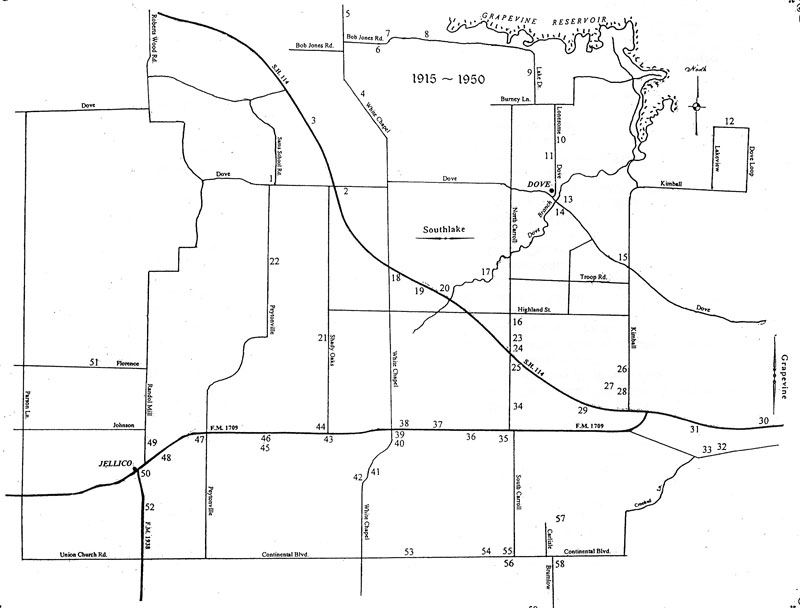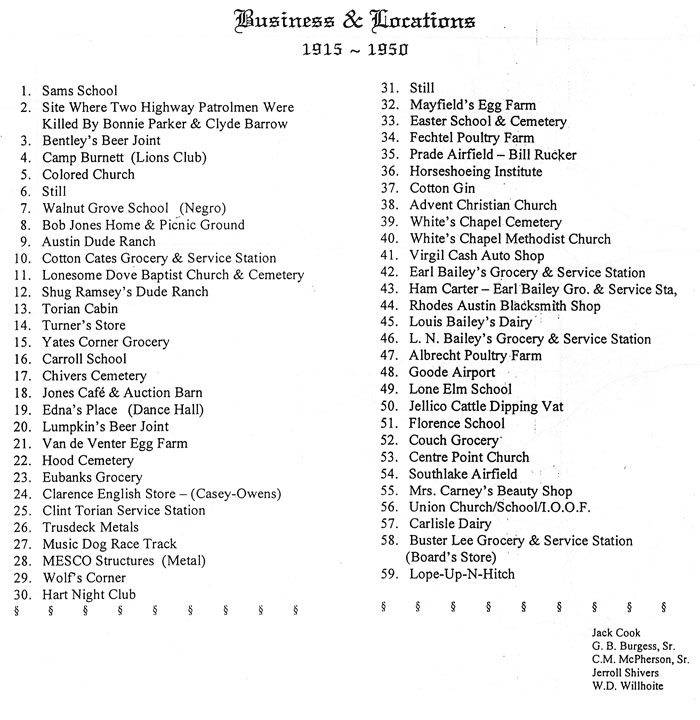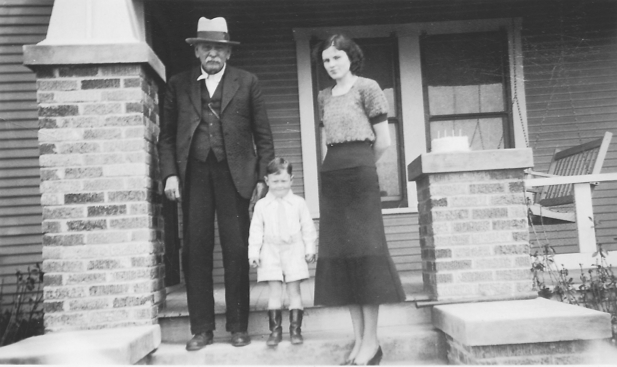Area West of Grapevine
Until 1956, what’s now Southlake was known as “the area west of Grapevine,” an unincorporated part of the county that was dotted with small truck farms, churches, schools and even some stills. Businesses included service stations, dairy and egg farms, grocery stores, a few nightclubs and “beer joints,” dude ranches, several small airports and even a track for dog racing. The map to the right, prepared by E.I. “Jack” Wiesman of Southlake with information from old-timers Jack Cook, G.B. Burgess Sr., C.M. McPherson Sr., Jeroll Shivers and W.D. Willhoite, shows where many of those places were located at various times between 1915 and 1950.
“In the beginning,” remembered longtime resident Mabel M. Cate in an oral history, “it wasn’t Southlake. It was just a mail route out of Grapevine and [in] no one’s city limits. Just country.”
Most people didn’t have much money. “This was the poorest land to try to farm and make a living,” longtime resident R.E. Smith explained. The farmers who planted and pulled peanuts from the area’s sandy soil in the early 1900s were just that – dirt poor. The better farmland – what he called “the most productive land in all the state of Texas” – was on Grapevine Prairie, the area EAST of Grapevine. In the 1970s, D/FW Airport poured concrete over thousands of those acres of rich blackland soil that had helped make cotton king.
In now-Southlake, families “belonged” to the small community near them: White’s Chapel, Dove, Carroll Hill, Old Union, Jellico. Sometimes a church, a store, a post office or a school stood at the center of the community. The communities’ importance – and people’s identification with them – faded as society became more mobile. Better roads and transportation made wage-earning jobs at oil companies, the stockyards and other places accessible. Some men commuted from their farms or relocated their families to be nearer their jobs.
After marrying in 1927, Carroll Hill School sweethearts Alno Bailey (White’s Chapel community) and Claude Shivers (Dove community) moved to the big city of Fort Worth. Alno, known for her hat designs and needle skills, was a milliner at Stripling’s department store. Claude worked at Texas Pacific Coal & Oil Co. Years later their son Jeroll returned to now-Southlake and lived with his wife, Frances, in the farmhouse his grandparents John R. “J.R.” and Ora Grace Shivers built in 1916 at N. White’s Chapel and Highway 114. The house still stands.
(J.R. and Ora Grace Shivers are the namesakes of Southlake’s newest park (2022), to be located in a subdivision at Dove Road and N. White’s Chapel. J.R. was on the first board of trustees for Carroll School District 99. See more pictures of the Bailey and Shivers families in our Photo Gallery under the years 1920-’40.)
In the 1950s, the area’s rural feel along with opportunities for recreation at the newly built Lake Grapevine began to attract more-affluent families. After D/FW Airport was built in the 1970s, pilots and their families began buying small acreages. (Until the 1990s, the lack of city water and sewer inhibited the development of subdivisions.)
Read more about the development of Southlake, founded in 1956, in Our Rich Past on this website.
Sources include
Southlake Historical Society member Jack Wiesman, who worked with Jack Cook, G.B. Burgess Sr., C.M. McPherson Sr., Jeroll Shivers and W.D. Willhoite to identify places on the map
Southlake Historical Society member R.E. Smith
Southlake Historical Society archives



